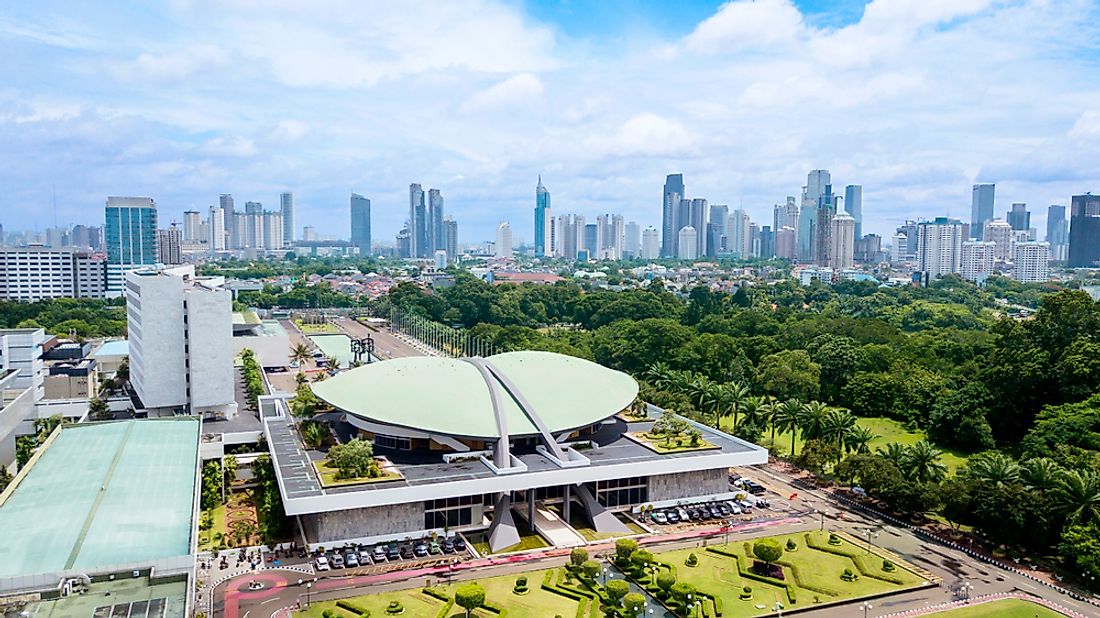What Type Of Government Does Indonesia Have?

What Type Of Government Does Indonesia Have?
The Indonesian government works within the framework of a presidential representative democratic republic where President is the head of both state and government. The President, in turn, chooses the Cabinet of Indonesia which forms the executive branch that maintain the day-to-day governance. The justice system consists of various courts that listen to and deal with the country’s internal cases. The Supreme Court is the Highest Justice System in the country while the National Ombudsman Commission oversees cases against the state. The MPR functions in formalizing broad outlines of state policies, inaugurating the president and supporting and amending the constitution. The Constitution of Indonesia runs the country.
Constitutional Framework
Indonesia constitution of 1945 gives the executive branch of the government most of the powers, particularly the president. Also, the law provides for the Supreme Advisor Council, a body of presidential advisers whose advice is not legally binding, as well as giving the president power to appoint Supreme Audit Board which finances the state finance. The constitution states that the People’s Consultative Assembly should elect the president and vice president every five years. In 1999 the legislation limited the President to two terms. In 2004, the new law decreed that both leaders ought to be elected directly. In general, the Constitution dictates the function and structure of the government, outlays the fundamental rights of the citizens, and preserves national cultural standards.
The Executive Branch Of The Government Of Indonesia
The citizens of Indonesia must vote for both the President and Vice President for five-year terms. The president is the head of state, supreme commander of the Indonesian armed forces and responsible for, maintaining internal governance, making domestic policies and foreign affairs. He or she appoints cabinet ministers. The representatives manage economic issues, defense, education, agriculture, foreign affairs and religious affairs. The president determines the number and nature of ministers.
The Legislative Branch Of The Government Of Indonesia
The People’s Consultative Assembly known as Majelis Permusyawaratan Rakyat, (MPR) makes up the legislative branch of the government. In 2004, the country adopted a bicameral parliamentary system and created Regional Representatives Council (Dewan Perwakilan Daerah, DPD) and the People’s Representative Council (Dewan Perwakilan Rakyat, DPR) as the upper house. Four-fifth of MPR seats belongs to the lower house, and members here are elected through the national pool of non-partisan candidate. On the hand, members of the DPR are elected directly from a province-based proportion system where voters cast for individuals and the particular parties as well. Every member of the legislature serves five-year term. The branch support and amends the constitution, inaugurate the president and formalize broad outlines of state policies.
The Judiciary
The highest level in the judicial system is the Indonesian Supreme Court which functions in hearing final cessation appeals and case reviews. The president appoints the judges serving the Supreme Court. The State Court (Pengadilan Negeri) is where most civil disputes appear. The Commercial Court handles matters like insolvency and bankruptcy while the State Administrative Court (Pengadilan Tata Negara) listens to administrative laws and cases against the government. The Constitution Court (Mahkamah Konstitusi) disputes over the legality of the law, dissolution of political parties, general election, and scope of authority of state institutions; and Religious Court (Pengadilan Agama) deals with codified Sharia Law case. The Judicial Commission (Komisi Yudisial) supervises these judges. The National Ombudsman Commission oversees offenses committed by the State.
Local Government Of Indonesia
Indonesia has 30 provinces (Provinsi, Propinsi), plus two special districts (Daerah Istimewa) of Aceh in northern Sumatra and Yogyakarta in Central Java, and Special Capital District (Daerah Khusus Ibukota, the metropolitan Jakarta. Administrative regions coincide with traditional areas on the smaller island with natural features serving as the boundaries. On the larger island, administrative boundaries were made to simplify complex traditions and cultural divisions. Since 1999, city and districts leaders are elected through a direct local election. The Local Councils of Representatives deals with the national legislature and are also elected through a general election. Villages or groups of villages in the rural (heads elected) and urban areas (heads appointed) link people and the central government. Normally there are two levels of neighborhood organization in a village, community association (rukun warga) and neighborhood associations (rukun tetangga). These bodies elect their chairpersons.
Foreign Relations Of Indonesia
During Suharto time as President, the country built strong relations with the US and strained ties with PR China due to Indonesia’s domestic tensions and anti-communist policies. Indonesia is a founding member of ASEAN and thus a member of ASEAN+3 as well as the East Asia Summit. The government of Indonesia collaborates with the US to eliminate Islamic fundamentalism and terrorist groups. The incumbent president is Joko Widodo who has been in office since October 20, 2014.







